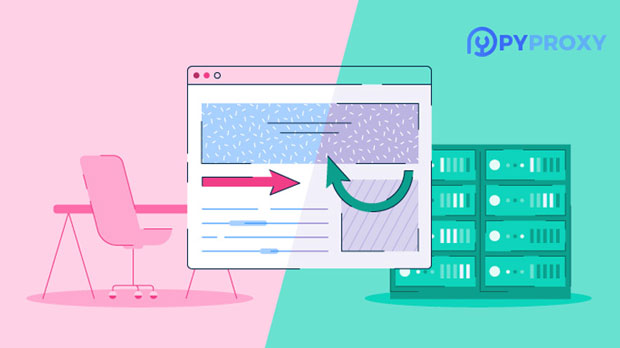When choosing between residential proxies and datacenter proxies, one of the most critical factors to consider is speed. Both proxy types offer distinct advantages depending on the use case, but they differ significantly in terms of performance. Residential proxies tend to be slower than datacenter proxies due to the nature of the network they operate on, which is shared by many devices and real users. On the other hand, datacenter proxies are typically faster because they rely on dedicated, high-speed data centers. Understanding these differences is essential for businesses and individuals looking to optimize their internet browsing experience, whether for web scraping, online gaming, or anonymity purposes. Understanding Residential Proxies and Datacenter ProxiesBefore we dive into the speed differences, it’s important to understand what residential and datacenter proxies are. Residential proxies are IP addresses provided by Internet Service Providers (ISPs) to homeowners. These IPs are typically assigned to real users and are thus considered more authentic and harder to detect. They are primarily used for purposes that require high anonymity or to simulate real user traffic, such as web scraping or accessing geo-restricted content. These proxies route traffic through actual residential networks, which can introduce slower speeds due to network congestion, routing inefficiencies, and the reliance on multiple intermediaries.Datacenter proxies, on the other hand, are not affiliated with ISPs and are hosted in data centers. They are typically faster because they rely on high-capacity infrastructure designed to handle large volumes of data. Since these proxies are not linked to real residential addresses, they tend to be more cost-effective and offer higher speeds. However, they can be more easily detected by websites due to their non-residential nature, which can lead to a higher rate of blocks or CAPTCHAs.Speed Factors of Residential ProxiesThe speed of residential proxies is often lower than datacenter proxies, but several factors contribute to this performance gap. First, the routing of data through real residential networks causes latency and higher chances of traffic congestion. These IPs may pass through various residential routers, which may not be optimized for proxy use, resulting in slower connection times.Another factor is the geographic distance between the residential proxy and the target website. Residential proxies are often spread across different regions, and the connection to far-off servers can lead to slower speeds. Additionally, since many users share the same residential network, bandwidth may be shared, further reducing performance.Furthermore, the level of demand placed on residential proxies can impact speed. When there is heavy usage of the network, speeds can degrade. The more users or devices connected to the network, the more likely the residential proxy will experience slowdowns due to network congestion.Despite these drawbacks, residential proxies provide superior anonymity and are generally less likely to be detected or blocked. This makes them ideal for tasks that require accessing websites without revealing automated traffic, such as scraping large volumes of data from various sites.Speed Factors of Datacenter ProxiesDatacenter proxies, as mentioned earlier, are faster than residential proxies. The primary reason for this is the infrastructure on which they run. Datacenter proxies are hosted in dedicated data centers equipped with high-performance servers, fast connections, and optimized hardware. These facilities have better control over routing, which minimizes latency and ensures a quicker response time.The physical location of datacenter proxies can also be more flexible, allowing users to choose proxies located close to their target servers for even faster speeds. Since these proxies are typically linked to high-speed networks, they can support larger amounts of data transfer and higher concurrent connections, further boosting speed.Datacenter proxies are also free from the network congestion issues that affect residential proxies. With dedicated resources and little to no sharing between users, datacenter proxies offer a more stable and consistent speed. These proxies are ideal for tasks that require high volume or frequent requests, such as large-scale web scraping or automated tasks.However, the downside is that datacenter proxies are more easily detected by websites. Since they are not linked to residential IPs, sites can identify patterns associated with datacenter IPs and block or flag them for suspicious activity.Real-World Use Cases: When Speed MattersFor businesses or individuals who require proxies for real-world applications, understanding how speed impacts performance is crucial.- Web Scraping: When using proxies for web scraping, speed is important but not always the top priority. For smaller-scale projects or when high levels of anonymity are needed, residential proxies may be the better choice. They provide a higher level of authenticity, and their slower speed might be acceptable for occasional requests. However, for large-scale scraping projects where speed and volume are critical, datacenter proxies are typically the best option due to their faster speeds and reliability.- SEO Tools: In SEO, proxies are often used to simulate browsing behavior from different geographic locations. Speed is a key factor here as SEO tools rely on rapid requests to multiple websites. Datacenter proxies excel in these cases, as they offer fast and consistent speeds that are necessary for conducting multiple operations in a short amount of time.- Gaming: Online gaming is another area where speed is of the essence. In games that require real-time responses, latency can make a significant difference in gameplay. Datacenter proxies provide the low-latency connections necessary to maintain smooth gameplay, while residential proxies might introduce delays due to the indirect nature of the network.- Geo-Restricted Content: For users looking to access geo-restricted content, both residential and datacenter proxies can be useful. However, residential proxies tend to be more reliable in bypassing geo-blocks, while datacenter proxies can offer faster access to content, depending on the website’s detection methods.Conclusion: Which Proxy is Right for You?The decision between residential proxies and datacenter proxies largely depends on your specific needs. If speed is your top priority, datacenter proxies offer a clear advantage. They provide faster, more consistent connections that are ideal for high-volume tasks or applications where performance is critical.However, if anonymity, avoiding blocks, or simulating real-user traffic is more important, residential proxies may be the better choice, even though they come with slower speeds. Ultimately, businesses or individuals should assess their priorities, such as speed, security, cost, and the type of task at hand, before making a decision.In conclusion, understanding the speed differences between residential proxies and datacenter proxies is crucial for optimizing online activities. While datacenter proxies offer speed and reliability, residential proxies provide superior anonymity. By balancing these factors, users can choose the right proxy type for their needs, ensuring both efficiency and security.
Aug 18, 2025



































































